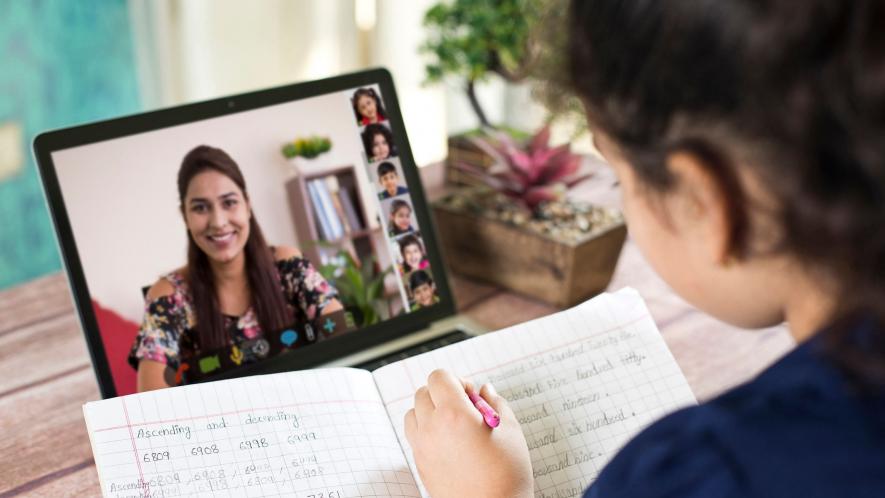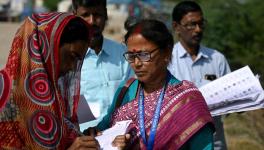Bihar has Largest Digital Divide Among School Children, Followed by West Bengal, Finds ASER survey

Representational Image. Image Courtesy: The Quint
New Delhi: Even as online learning increasingly replaces traditional learning, around 45.6% of children enrolled in schools in Bihar have no smartphone at home, according to the latest Annual Status of Education Report (ASER) 2021. The findings of the latest report released by the Pratham foundation on Wednesday make Bihar the state with the largest digital divide in the country.
West Bengal had the second largest population of children enrolled in school with no smartphone at home (41.6%), while Uttar Pradesh was not far behind with 41.1% of children without smartphones at home, the report found. The report is based on responses from 75,234 children (5-16 years of age) from 581 districts in 25 states. Because of the pandemic, the survey was conducted over the phone between September-October 2021.
Kerala was the best-performing state when it comes to school children with at least one smartphone at home (97.5%), followed by Himachal Pradesh (95.6%), Manipur and Nagaland (92.9%)
Across the country, overall, 67.6% of children enrolled in school had a smartphone at home in 2021, a marginal improvement from 2020, when 61.8% of schoolchildren had at least one smartphone at home. However, smartphone availability has more than doubled amid the COVID-19 pandemic. In 2018, only 36.5% of schoolchildren had at least one smartphone at home. Even though smartphone ownership has increased, children's access remained an issue, the report said.
"Expanding smartphone availability in the household does not automatically translate into children's access to a smartphone. Across all grades, although over two-thirds of all enrolled children have a smartphone at home, just over a quarter of these have full access to it for their studies (27%), while close to half have partial access (47%) and the remaining quarter have no access at all (26.1%)", it observed.
Bihar also had the highest percentage of students (53.8%) who do not have access to a smartphone despite a device being available at home. Only 11.8% of children in Bihar with a smartphone at home have full access to it for studies. West Bengal has the second-highest percentage of students (46.5%) who do not have access to a smartphone despite a device at home, followed by Uttar Pradesh (34.3%) and Rajasthan (33.4%).
The ASER report also found that more children in private schools have smartphones at home (79%) than children in government schools (63.7%). Younger children (students of classes one and two) are more deprived when it comes to access to smartphones, with as many as 39.3% having no access despite having devices at home compared to 17% of older children (students classes nine and above) with no access, the report further stated.
"...The education system has not been able to put in place effective mechanisms for reaching out systematically to children when schools are unable to hold in-person classes, which means that the vast majority of children have spent a year and a half without much engagement with educational content," the report further observed.
According to the survey, enrollment of children in government schools increased from 65.8% to 70.3% over the last year. The survey underlined that the increase in enrolment in government was most striking among children enrolled in the lowest grades.
Like 2020, 2021 also experienced more students depending on tuitions, with the share rising from 32.5% to 39.2%. The survey also found that the largest increase in the proportion of children taking tuition was seen among children from the most disadvantaged households. "Taking parental education as a proxy for economic status, between 2018 and 2021, the proportion of children with parents in the 'low' education category who are taking tuition increased by 12.6%, as opposed to a 7.2% increase among children with parents in the 'high' education category", the report said.
ASER is a citizen-led household survey that provides nationally representative estimates of children's schooling status and foundational reading and arithmetic skills. The survey aims to understand how school-going children studied at home since the onset of the pandemic and the challenges that schools and households now face as schools reopen with the pandemic receding.
The writer is a Delhi-based independent researcher. The views are personal.
Get the latest reports & analysis with people's perspective on Protests, movements & deep analytical videos, discussions of the current affairs in your Telegram app. Subscribe to NewsClick's Telegram channel & get Real-Time updates on stories, as they get published on our website.
























